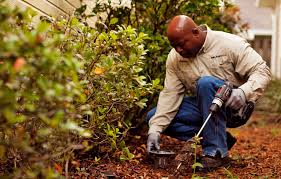Some Of Termite Control Review
This webpage describes the three types of the most common termite species which are located in infestations around Australia, subterranean, drywood and dampwood, and also termite.
Termites are classified according to their nesting and feeding habits: subterranean, drywood and dampwood.
Subterranean termites are the most common kind of termite that infests timber in structures and are one of the most damaging pests. Outdoors they mostly infest wood that is dead in contact with the soil, such as stumps, fallen trees and branches. They prefer although they can digest wood, wood that has some degree of rust which makes it easier for them to digest it. .
Termite Control Specialists Fundamentals Explained
Subterranean termites will need to be near a supply of moisture to live, where they can easily acquire moisture from the 30, which makes their nests in or close to. They tunnel to get timber or soil and in seasons that they float down deeper into the soil to achieve moisture. .
The termites use soil for a material to construct nests and shelter tubes, which can be made up of wood soil, faeces and saliva. Some species construct carton nests above ground and construct shelter tubes (also referred to as mud tubes) to connect the nest into the ground.
Foraging is determined by the weather, with activity in conditions or winter and activity in summer after rainfall. In areas they could forage with peaks during warmer, wetter conditions.
Termite Control Specialists for Dummies
Termites reside in colonies less than 1000 individuals, wholly inside pieces of timber. There may be several tiny colonies like a piece of furniture inside a piece of timber or item. They could feed across rings as is typical termites so that the galleries don't adhere to the grain of timber, but they tend to steer clear of heartwood.

Colonies can grow for years undetected until even the termites swarm or the timber breaks. Until the population reaches a critical point, the winged alates, which are the only casts that leave the nest, may not be made for years in a colony. They then leave the nest to pair up and discover a site that is new to mate and start a new colony, generally not. .
Dampwood termites infest wood that stays moist due to contact or via a water leak in a construction. They are likely to infest timber that's outside, such as a tree, stump or logs in contact.

The Buzz on Termite Control Review
Dampwood termites live within the wood they make big galleries that are open and feed on. As with termites, they may infest wood for many years before they are discovered, which is likely when the alates swarm from a mature colony. Swarming may occur with different species swarming at distinct times, over several months.
They are a sign of a moisture issue if they're found at a building. By removing the supply of moisture they are generally minor pests and may be controlled in structures. In trees that are live they tend to feed on rotting and dead wood.
Termite species can be difficult to identify, even for the experts. Identification is usually dependent on the soldiers, that's the caste that has the features that were most readily distinguishable.
Of the species listed above, it is the Coptotermes species that are public enemy number 1 in Australia.
See This Report on Termite Control Review
The soldier's head is yellow and rectangular pear-shaped with darker mandibles that are thin. Body is up to 7 mm long. It's easily confused Going Here with two other native Coptotermes species, including C. frenchi and C. lacteus (Victoria Museum)
The soldiers generate a white sticky liquid from an opening (fontanelle) on front of mind when defending the nest from assault.
Mounds are not typically built by coptotermes species, except in Queensland and other regions of Australia. They mostly nests in trees, stumps, sticks, buried timber spaces, around homes under buildings and in walls. Trees for nesting are various eucalypts English oaks and peppercorns. The colony is mostly found at the root crown or the lower portion of their trunk.
Excitement About Termite Control Review
Although Mastotermes darwiniensis is the locally across its range in tropical Australia, coptotermes acinaciformis is the termite species in Australia overall. C. acinaciformis strikes all lumber structures and obligations forest and ornamental trees as well as fruit trees.